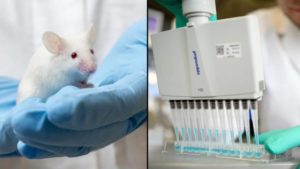
Scientists Have Successfully Cured Diabetes In Mice For The First Time
Scientists from St. Louis, Missouri, have successfully cured mice of diabetes for the first time using converted human cells to defeat the illness.
This breakthrough can change the lives of over 420 million people around the world that suffer from diabetes.
The stem cell technique was used by scientists at the Washington University School of Medicine in St. Louis.

The researchers successfully cured the disease in mice for 9 months and even up to 1 year.
The converted human stem cells allowed the animals to quickly produce insulin that broke down their high blood sugar.
The experiments saw their blood sugar levels return to a normal healthy level within just 2 weeks.
Diabetes can be managed through a healthy diet, a good lifestyle, and medication, but there is currently a cure for the disease.

Without going too far into the technical side of what the researchers from St. Louis did, the researchers managed to change human stem cells to insulin-producing ones, which then showed the altered cells could help the mice fight off the illness.
The researchers also converted some other stem cells into beta-pancreatic cells to produce insulin and break up the sugar in the mice’s blood.
The St. Louis based scientists published their results in the journal biotechnology.
Dr. Jeffrey R. Millman, an assistant professor of medicine and biomechanical engineering, said, “These mice had very severe diabetes with blood sugar readings of more than 500 milligrams per deciliter of blood – levels that could be fatal for a person – and when we gave the mice the insulin-secreting cells, within two weeks their blood glucose levels had returned to normal and stayed that way for many months.”

Dr. Millman, who is also the principal investigator of this particular study, explained, “A common problem when you’re trying to transform a human stem cell into an insulin-producing beta cell – or a neuron or a heart cell – is that you also produce other cells that you don’t want.”
He added, “In the case of beta cells, we might get other types of pancreas cells or liver cells. The more off-target cells you get, the less therapeutically relevant cells you have.”
He continued, “You need about a billion beta cells to cure a person of diabetes. But if a quarter of the cells you make are actually liver cells or other pancreas cells, instead of needing a billion cells, you’ll need 1.25 billion cells. It makes curing the disease 25 percent more difficult.”
The breakthrough study is good news for everyone with diabetes, but the thing is that we are still a long way from using this type of treatment on humans.

There is a load of testing that must take place to ensure the treatment works and is safe for humans.
As of now, the researchers will be testing out the new method on larger animals for longer periods of time.
We hope researchers find a cure for diabetes in a very fast way.